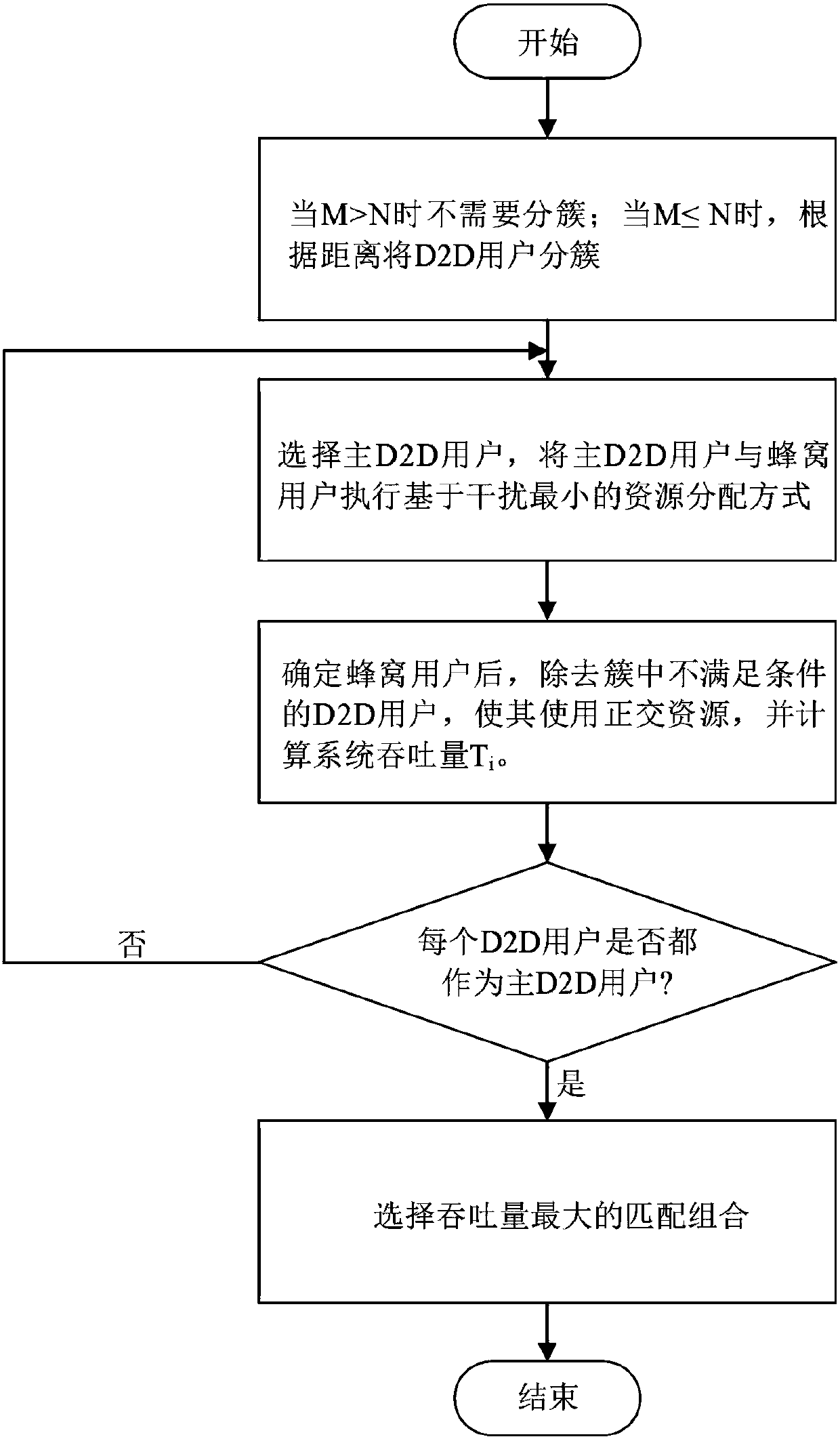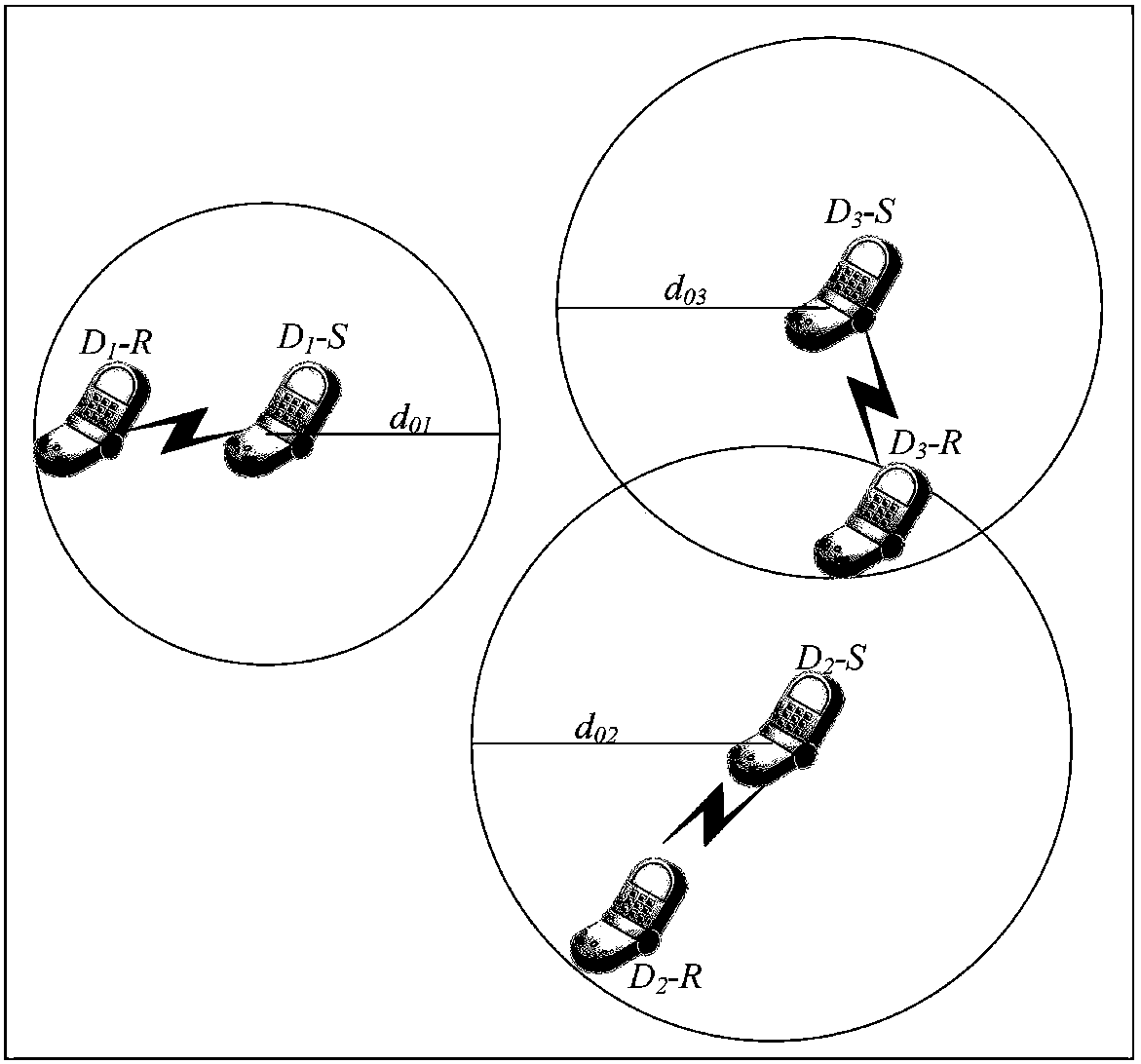Resource allocation method for D2D (Device-to-Device) communication in cellular network and system
A resource allocation and cellular network technology, applied in the field of wireless communication networks, can solve the problems of D2D users being unable to access the cellular system, co-channel interference, and complex resource allocation methods.
- Summary
- Abstract
- Description
- Claims
- Application Information
AI Technical Summary
Problems solved by technology
Method used
Image
Examples
Embodiment Construction
[0058] In order to make the objectives, technical solutions and advantages of the present invention clearer, the present invention will be further described in detail below in conjunction with embodiments. It should be understood that the specific embodiments described herein are only used to explain the present invention, but not to limit the present invention.
[0059] The resource allocation method for D2D communication in a cellular network provided by the embodiment of the present invention includes:
[0060] First, decide whether to cluster according to the number of cellular users and D2D users. If clustering is needed, apply distance-based clustering; then select D2D users as the primary D2D users and cellular users to implement the least interference-based resource allocation method; finally The cluster update removes D2D users who do not meet the interference conditions from the cluster, uses orthogonal resources for communication, and calculates and selects the matching ...
PUM
 Login to View More
Login to View More Abstract
Description
Claims
Application Information
 Login to View More
Login to View More - R&D
- Intellectual Property
- Life Sciences
- Materials
- Tech Scout
- Unparalleled Data Quality
- Higher Quality Content
- 60% Fewer Hallucinations
Browse by: Latest US Patents, China's latest patents, Technical Efficacy Thesaurus, Application Domain, Technology Topic, Popular Technical Reports.
© 2025 PatSnap. All rights reserved.Legal|Privacy policy|Modern Slavery Act Transparency Statement|Sitemap|About US| Contact US: help@patsnap.com



